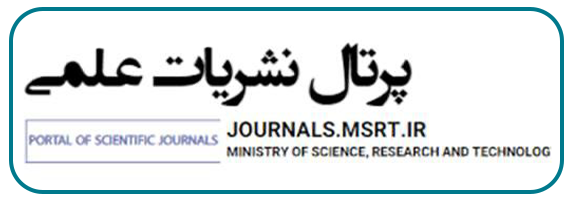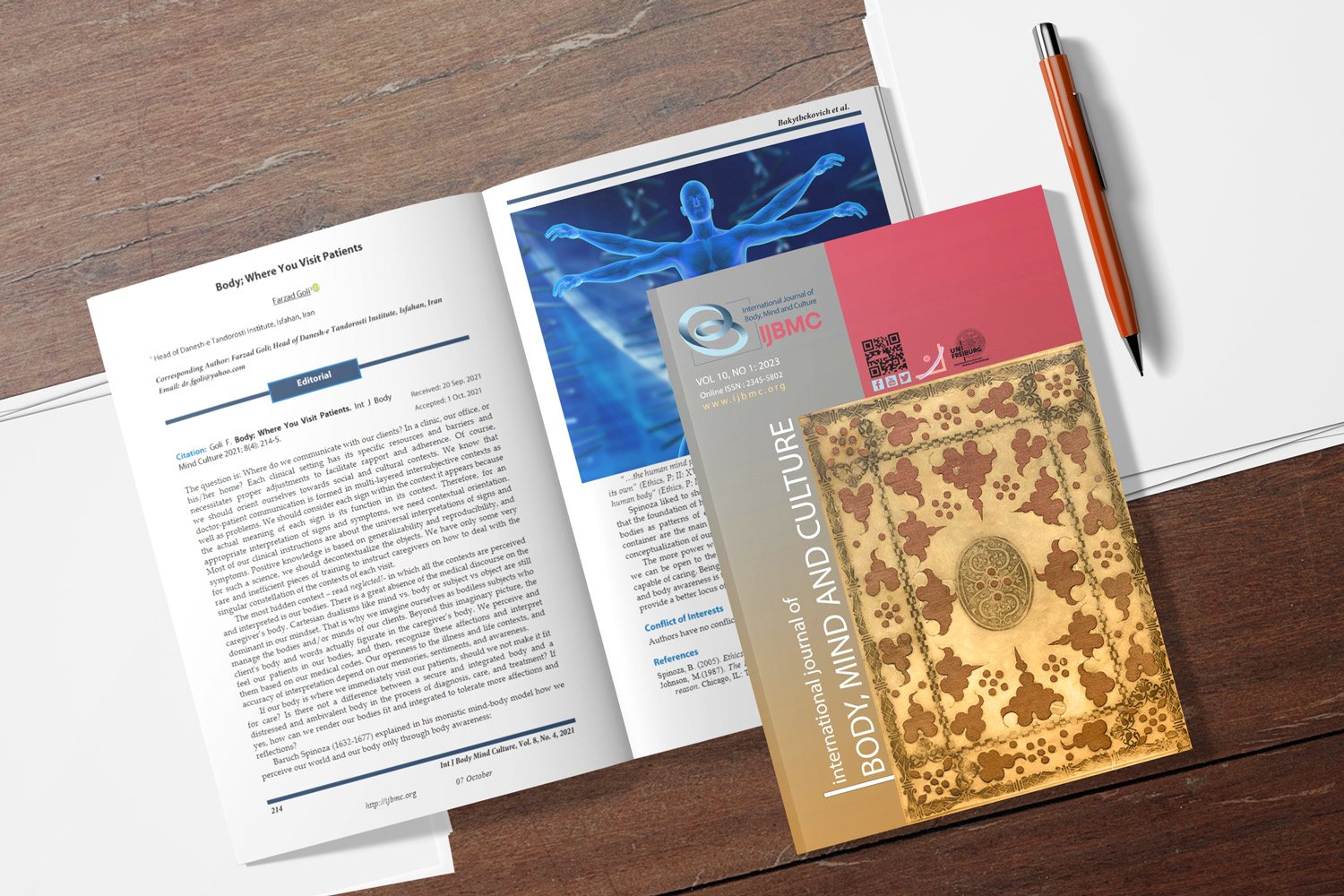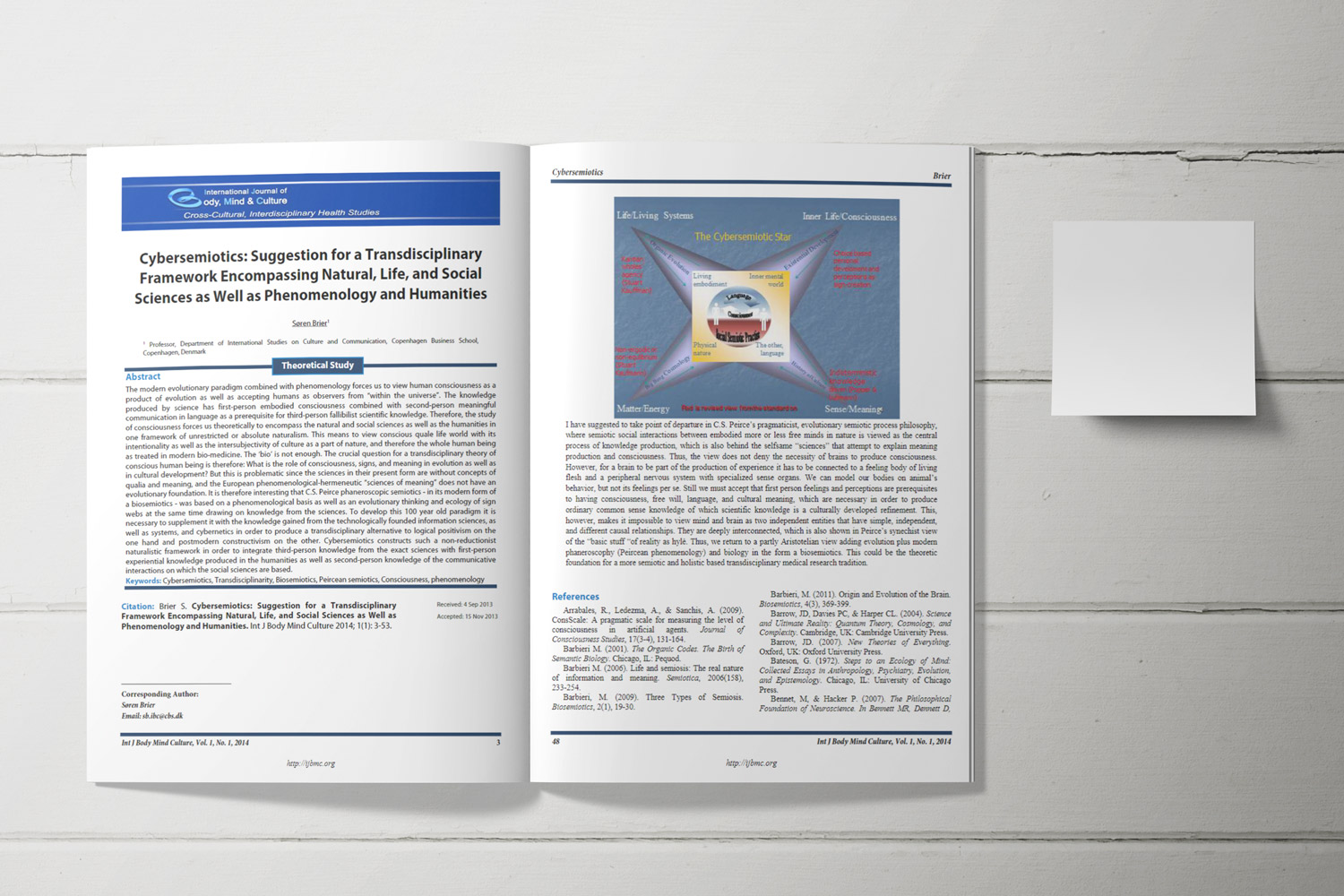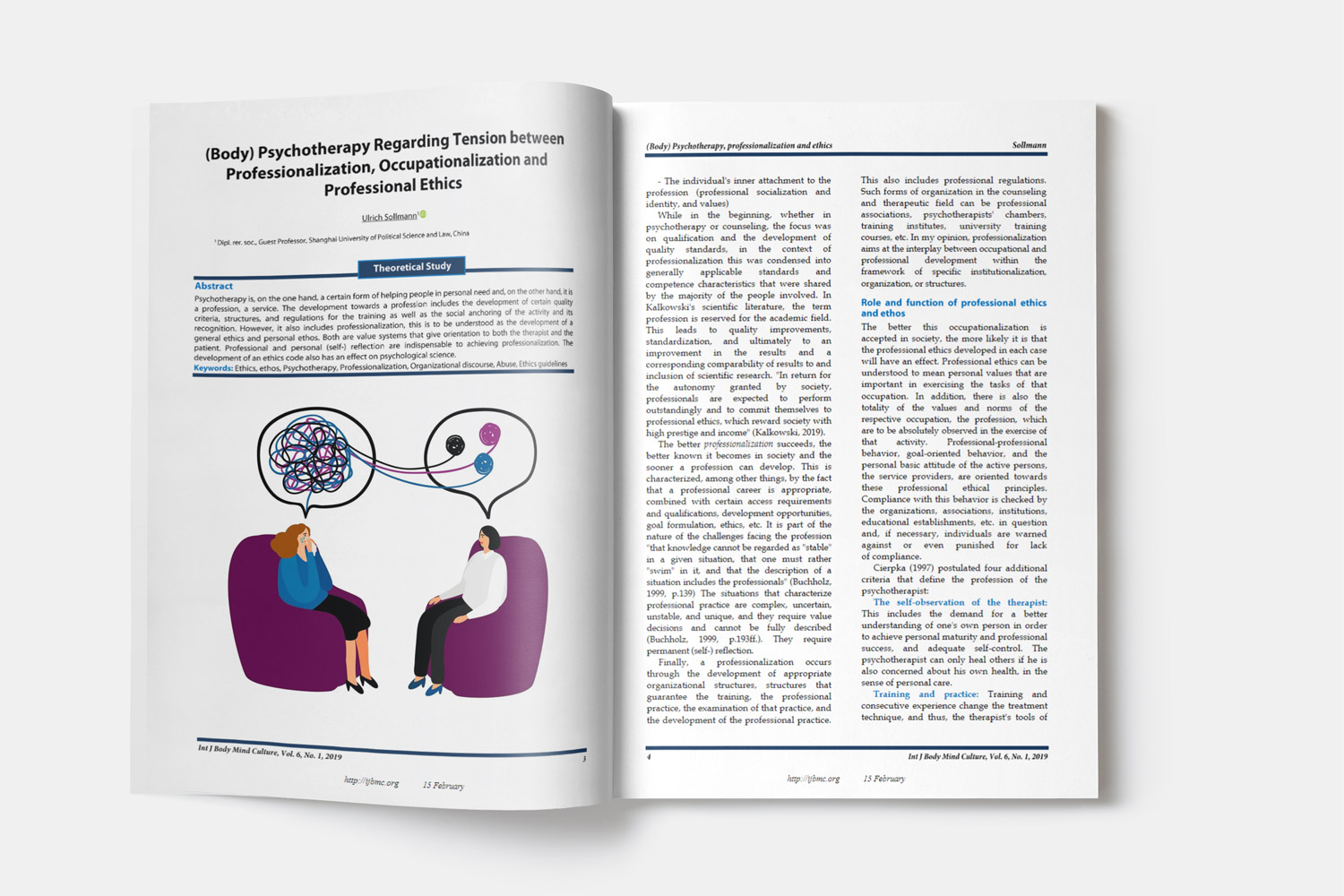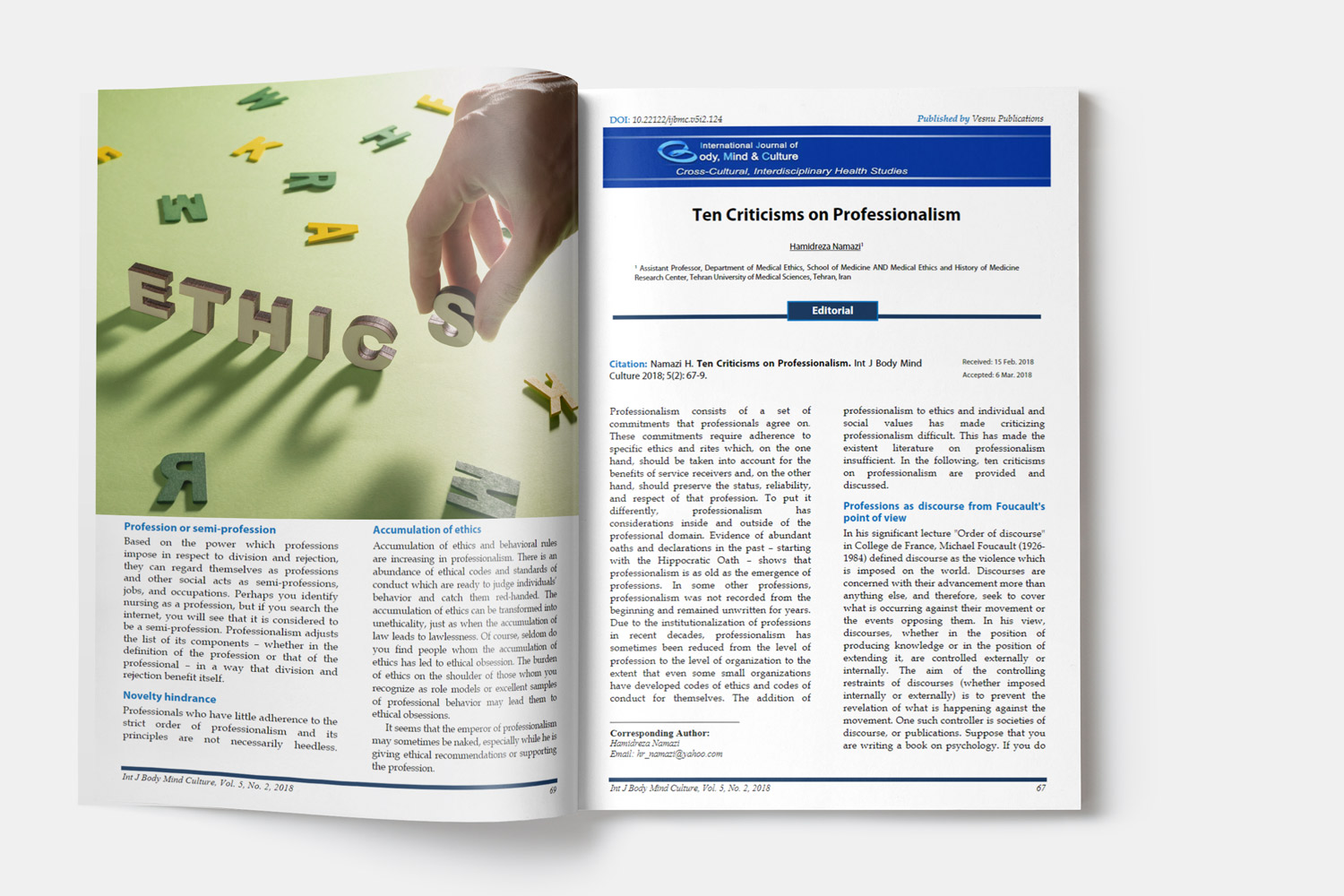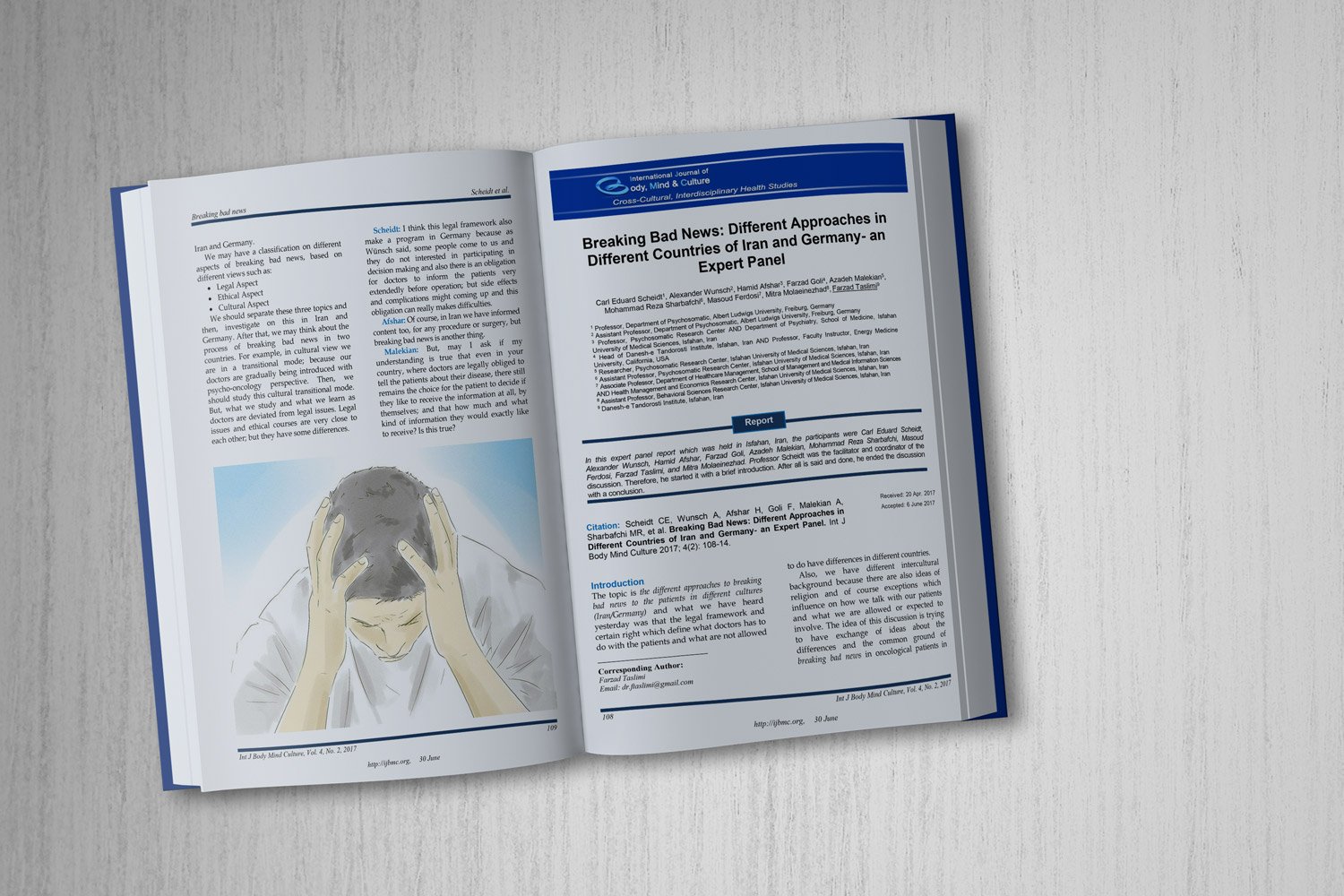Effectiveness of Mindfulness-Based Cognitive Therapy on Hopelessness among Women with Breast Cancer and Gynecological Cancer
Downloads
Background: This study investigated the effect of mindfulness-based cognitive therapy (MBCT) on alleviation of hopelessness symptoms among women with breast and gynecological cancer. The diagnosis of gynecologic cancer not only has evident physical ramifications for the patient, but also produces secondary psychological stressors that negatively impact the patient's quality of life (QOL). A research study investigating the effects of MBCT interventions may provide a new approach to coping with these problems.
Methods: This study employed a pretest-posttest and intervention group-control group design to evaluate the outcome of the intervention among individuals receiving MBCT in the Cancer Research Center of Shohadaye Tajrish Hospital, Iran. A total of 82 patients participated in the study (intervention group = 41 individuals, control group = 41 individuals) and 61 participants completed the study (intervention group = 29 individuals, control group = 32 individuals). In the intervention group, 29 of the 41 enrolled participants completed the MBCT intervention.
Results: After adjusting for pretest, MBCT had a significant effect on the dependent variables of hopelessness [F (2,52) = 59.270, P < 0.001; Wilk's lambda = 0.305; partial eta squared = 0.695)]. There was a significant difference between the groups in terms of hopelessness due to loss of motivation (F = 21.711, df1 = 54, P < 0.001; eta = 0.291). The effect size is 0.291 and it is slightly high. Moreover, there was a significant difference between the groups in terms of hopelessness due to future expectation (F = 87.030, df1 = 54, P < 0.001; eta = 0.622). The effect size is 0.622 and it is higher than the average. The findings indicated that MBCT significantly improved measures of hopelessness.
Conclusion: Analysis of covariance showed that MBCT was effective on reduction of hopelessness among patients suffering from breast and gynecological cancers.
Downloads
Abramson, L. Y., Metalsky, G. I., & Alloy, L. B. (1989). Hopelessness depression: A theory-based subtype of depression. Psychol Rev, 96(2), 358-372.
Akechi, T., Okamura, H., Yamawaki, S., & Uchitomi, Y. (1998). Predictors of patients' mental adjustment to cancer: patient characteristics and social support. Br.J Cancer, 77(12), 2381-2385. Retrieved from PM:9649163
Akechi, T., Okuyama, T., Imoto, S., Yamawaki, S., & Uchitomi, Y. (2001). Biomedical and psychosocial determinants of psychiatric morbidity among postoperative ambulatory breast cancer patients. Breast.Cancer Res Treat., 65(3), 195-202. Retrieved from PM:11336241
Andersen, B. L., & Turnquist, D. C. (1989). Psychological issues. In J.S. Berek & N. F. Hacker (Eds.), Practical gyneco- logic oncology (pp. 631-656). Baltimore, MD: Williams & Wilkins.
Andersen, B. L., Shapiro, C. L., Farrar, W. B., Crespin, T., & Wells-Digregorio, S. (2005). Psychological responses to cancer recurrence. Cancer, 104(7), 1540-1547. doi:10.1002/cncr.21309 [doi]. Retrieved from PM:16118802
Aranda, S., Yates, P., Edwards, H., Nash, R., Skerman, H., & McCarthy, A. (2004). Barriers to effective cancer pain management: a survey of Australian family caregivers. Eur.J Cancer Care (Engl), 13(4), 336-343. doi:10.1111/j.1365-2354.2004.00483.x [doi];ECC483 [pii]. Retrieved from PM:15305901
Beck, A. T., & Steer, R. A. (1988). BHS, Beck Hopelessness Scale: Manual. San Antonio, TX: Psychological Corporation.
Brennan, D. (2004). Women Work, Men Sponge, and Everyone Gossips: Macho Men and Stigmatized/ing Women in a Sex Tourist Town. Anthropological Quarterly, 77(4), 705-733. Retrieved from http://www.jstor.org/stable/4150854.
Carlson, L., Speca, M., & Segal, Z. V. (2011). Mindfulness-Based Cancer Recovery: A Step-by-Step MBSR Approach to Help You Cope with Treatment and Reclaim Your Life. Oakland, CA: New Harbinger Publications.
Corney, R., Everett, H., Howells, A., & Crowther, M. (1992). The care of patients undergoing surgery for gynaecological cancer: the need for information, emotional support and counselling. J Adv.Nurs., 17 (6), 667-671. Retrieved from PM:1607497
Coyne, J. C., Benazon, N. R., Gaba, C. G., Calzone, K., & Weber, B. L. (2000). Distress and psychiatric morbidity among women from high-risk breast and ovarian cancer families. J Consult.Clin Psychol, 68(5), 864-874. Retrieved from PM:11068972
Dejkam, K. (2004). Adaptability and standardization of Beck Hopelessness Scale with students of Islamic Azad University, Tehran Branch. I (Thesis). Tehran, Iran: Tehran Branch, Islamic Azad University.
Dozois, D. J., Covin, R., & Brinker, J. K. (2003). Normative data on cognitive measures of depression. J Consult.Clin Psychol, 71(1), 71-80. Retrieved from PM:12602427
Erdfelder, E., Faul, F., & Buchner, A. (1996). GPOWER: A general power analysis program. Behavior Research Methods, Instruments, & Computers, 28(1), 1-11.
Evans, C. J., Lyons, N. B., & Killien, M. G. (1986). The effect of infant formula samples on breastfeeding practice. J Obstet Gynecol.Neonatal.Nurs., 15(5), 401-405. doi:S0884-2175(15)32626-5 [pii]. Retrieved from PM:3639930
Faul, F. ., & Erdfelder, E. (2004). G Power: A Priori, Post-Hoc, and Compromise Power Analyses for MS-DOS (Computer Program). Bonn, Germany: Department of Psychology, University of Bonn.
Greimel, E. R., & Freidl, W. (2000). Functioning in daily living and psychological well-being of female cancer patients. J Psychosom.Obstet Gynaecol., 21(1), 25-30. Retrieved from PM:10907212
Helgeson, V. S., & Tomich, P. L. (2005). Surviving cancer: a comparison of 5-year disease-free breast cancer survivors with healthy women. Psychooncology., 14(4), 307-317. doi:10.1002/pon.848 [doi]. Retrieved from PM:15386765
Holland, J. C., Andersen, B., Breitbart, W. S., Compas, B., Dudley, M. M., Fleishman, S. et al. (2010). Distress Management. Journal of the National Comprehensive Cancer Network, 8(4), 448-485.
Lotfi Kashani, F. (1998). The common factors in psychotherapy as a new approach[PhD thesis]. Tehran, Iran: Tehran Science and Research Branch, Islamic Azad University.
Lotfi Kashani, F., Vaziri, S., Esmaeil Akbari, M., Zeinolabedini, N., Sanaei, H., & Jamshidifar, Z. (2014). The Effectiveness of Creating Hope on Distress of Women with Breast Cancer. Procedia - Social and Behavioral Sciences, 159, 201-205.
Northouse, L., Templin, T., & Mood, D. (2001). Couples' adjustment to breast disease during the first year following diagnosis. J Behav.Med, 24(2), 115-136. Retrieved from PM:11392915
Northouse, L. L., Mood, D., Kershaw, T., Schafenacker, A., Mellon, S., Walker, J. et al. (2002). Quality of life of women with recurrent breast cancer and their family members. J Clin Oncol., 20(19), 4050-4064. doi:10.1200/JCO.2002.02.054 [doi]. Retrieved from PM:12351603
Oh, S., Heflin, L., Meyerowitz, B. E., Desmond, K. A., Rowland, J. H., & Ganz, P. A. (2004). Quality of life of breast cancer survivors after a recurrence: a follow-up study. Breast.Cancer Res Treat., 87(1), 45-57. doi:10.1023/B:BREA.0000041580.55817.5a [doi];5274170 [pii]. Retrieved from PM:15377850
Schotte, D. E., Cools, J., & Payvar, S. (1990). Problem-solving deficits in suicidal patients: trait vulnerability or state phenomenon? J Consult.Clin Psychol, 58(5), 562-564. Retrieved from PM:2254502
Zabora, J., BrintzenhofeSzoc, K., Curbow, B., Hooker, C., & Piantadosi, S. (2001). The prevalence of psychological distress by cancer site. Psychooncology., 10(1), 19-28. doi:10.1002/1099-1611(200101/02)10:1<19::AID-PON501>3.0.CO;2-6 [pii]. Retrieved from PM:11180574
Zigmond, A. S., & Snaith, R. P. (1983). The hospital anxiety and depression scale. Acta Psychiatr.Scand., 67(6), 361-370. Retrieved from PM:6880820.
Copyright (c) 2018 International Journal of Body, Mind and Culture

This work is licensed under a Creative Commons Attribution-NonCommercial 4.0 International License.






